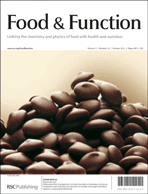
Flavanols from tea accumulate in the cell nucleus, which could help in understanding their beneficial health effects © Shutterstock
Everyone knows that a cup of tea is good for you, but the exact reasons for this are not clear. To discover the fundamentals of tea’s health benefits, scientists in Germany have investigated the interactions of compounds from tea with cells on a molecular level.
Both green and black tea contain around 30,000 polyphenolic compounds, some of which have been shown to have numerous health benefits, including reducing cardiovascular disease, osteoporosis and inflammation. Despite their positive effects, which have been seen in epidemiological findings and clinical trials, their exact biochemical mechanism is still not clear. Polyphenols can act as antioxidants, and for a long time this was thought to be the reason for their health benefits. However, recent studies have shown that this only plays a small part in their effectiveness.
Read the full article in Chemistry World.
Tweet: RT @ChemistryWorld We love a cup of tea at Chemistry World Towers but why exactly is it so good for you? http://rsc.li/TEfBON
Link to journal article
Phenolic promiscuity in the cell nucleus – epigallocatechingallate (EGCG) and theaflavin-3,3′-digallate from green and black tea bind to model cell nuclear structures including histone proteins, double stranded DNA and telomeric quadruplex DNA
Gediminas Mikutis, Hande Karaköse, Rakesh Jaiswal, Adam LeGresley, Tuhidul Islam, Marcelo Fernandez-Lahore and Nikolai Kuhnert
Food Funct., 2013, Advance Article
DOI: 10.1039/C2FO30159H

















